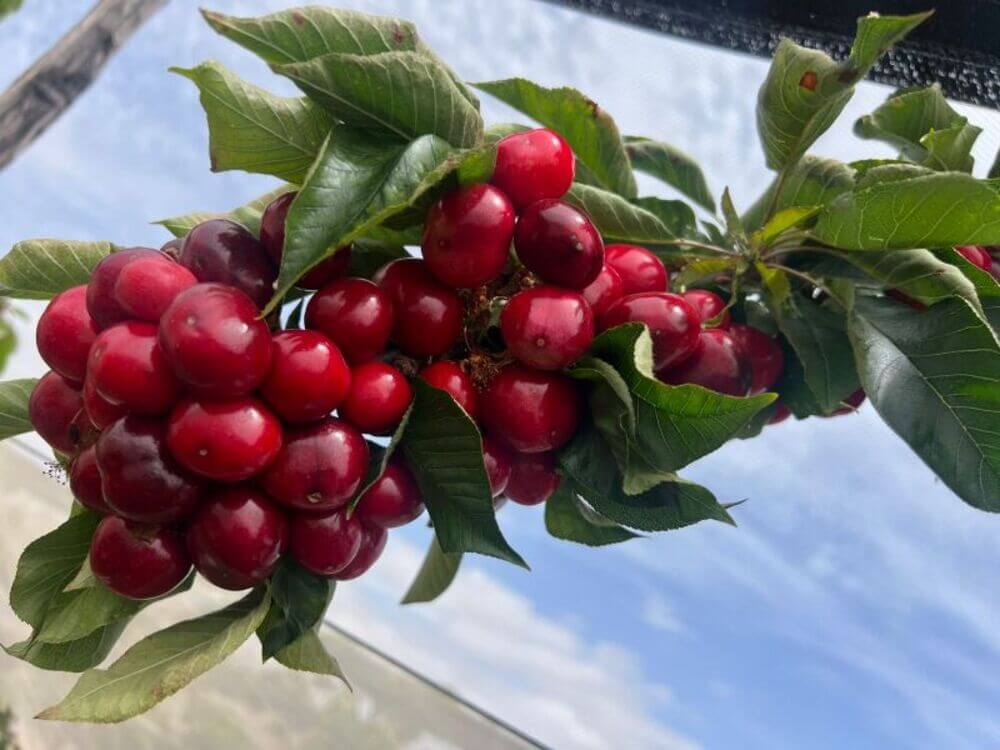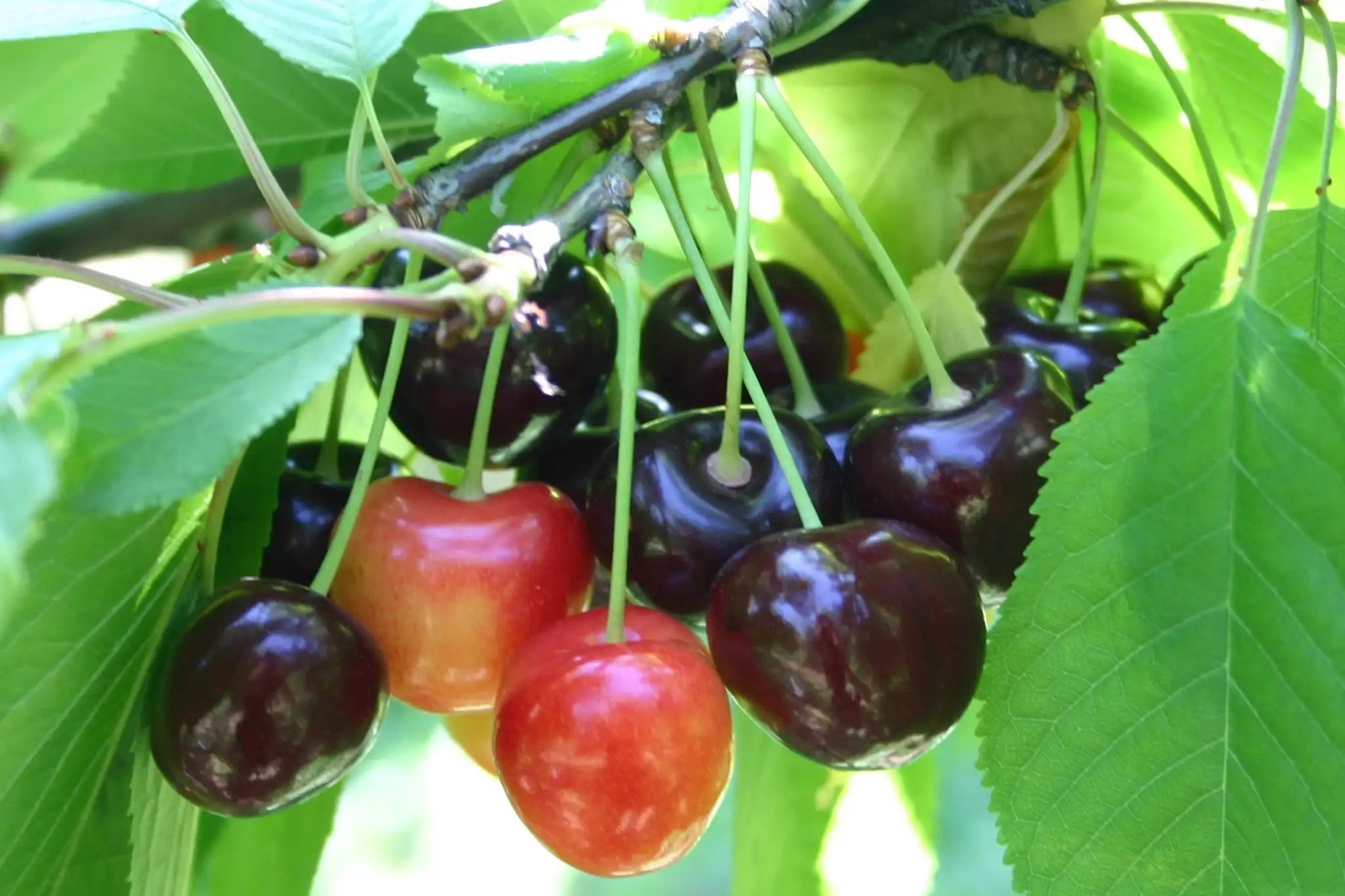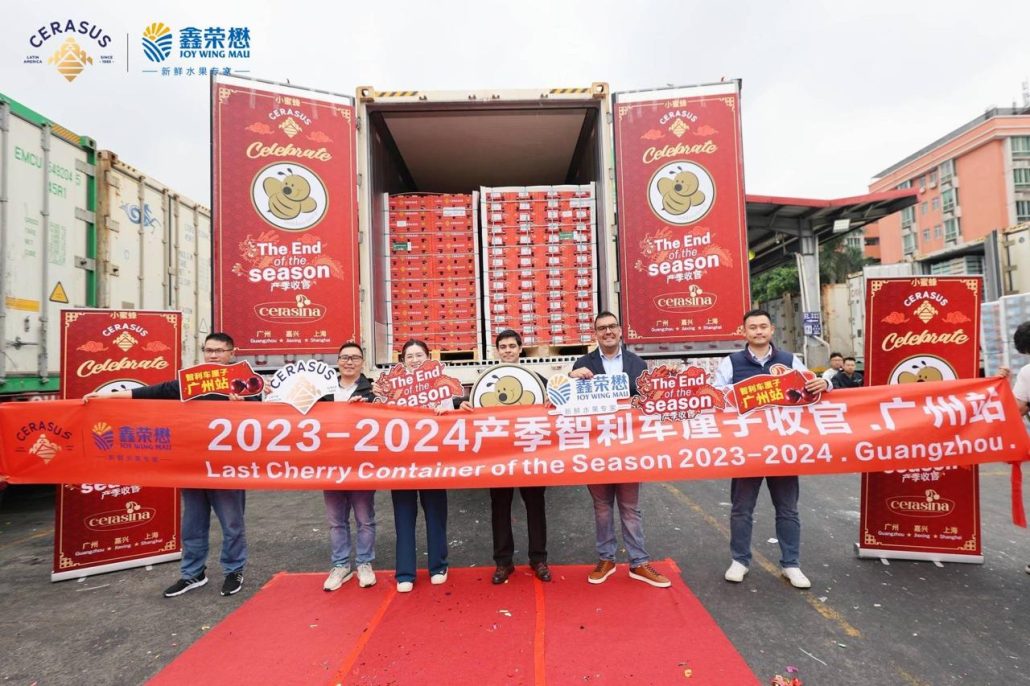Due to multiple factors, including production costs, labor, and drought, in recent years the agricultural production of this region has been shifted towards more profitable fruit species that offer competitive advantages in terms of harvest dates and climatic factors.
The producers in the region of Valparaíso have found cherry cultivation to be a profitable opportunity that adapts to the conditions and international market, also contributing to positioning Chile as a leader in cherry production in the southern hemisphere, with an estimated total of 63,494 hectares by 2022.
The cherry tree is experiencing a substantial increase in planted area, something that was unthinkable until recently. In terms of cultivation, and given that the coastal influence ensures lower temperatures and higher relative humidity, the area is suitable for flowering and fruit set, allowing for high yields and quality in cherry varieties with low chill requirements and early harvest. For this reason,
Jorge Schmidt, a farmer from the region who has observed the area’s potential and agricultural development, states that “in Aconcagua and its surroundings, there are climatic conditions that allow for very early harvests, ensuring better prices.”
Currently, according to Odepa data, the area planted with cherry trees in the region of Valparaíso covers 250 hectares, in areas usually recognized for citrus fruits and avocados, but spaces are also opening up for early crops that could even compete with Chile's earliest harvest area in Ovalle, in the Coquimbo region.
The possibility of switching species is also due to the economic attractiveness, as the market continues to offer good prices to producers (an average of 5 USD/kg), one of the highest values among national fruit species for export.
“With the goal of standing out nationally to achieve the best sales prices in the destination market, producers have sought areas that allow for the production of early cherries,” explains Eduardo Fernandez, an agronomist from PUCV and Ph.D. in Agricultural Sciences from the University of Bonn, Germany.
With accumulations of 900-1,000 chilling hours in the area, it is essential to work with low-chill varieties from genetic improvement programs or already established varieties like Santina, Lapins, and Royal Down.

However, even strategic areas like Ovalle face significant climatic and water challenges. “In these climates, the conditions for crop development are difficult and could limit the potential yield of the species.
The Valparaíso Region, on the other hand, can be considered an intermediate point between an area that favors the production of relatively early cherries and one that presents acceptable climatic conditions for plant development,” explains Eduardo Fernández.
Additionally, he adds, to ensure the potential yield of the species and reduce disturbances or physiological losses, it is essential to implement advanced technological packages in production techniques and develop adaptation strategies.
To reduce the negative impact of the region’s climate, Cristóbal Palacios, an academic at the School of Agronomy at Universidad Mayor, recommends strategies aimed at increasing chilling accumulation during winter through the use of shading nets, evaporative cooling, or applications to mitigate heat stress.
Juan Carlos Seitz, a grower of cherries and European hazelnuts in Itahue, in the Maule region, recognizes that while cherries have not seen a decline in demand and prices, they are a delicate fruit to produce. “Every year, the previous winter and spring influence production and the decisions cherry growers must make to prevent flowers from being burned by frost or fruits from cracking, so there is a risk to be prepared for.”
Indeed, the quality of cherries—about 90% of which are exported to China—has become a priority for producers because, while Chinese consumers pay a higher price and represent a niche market, they also demand large sizes and high-quality fruit.
Alejandro Rodríguez, Business Unit Manager at Albaugh Chile, a company specializing in post-patent crop protection products, stated that “the cherry in the region of Valparaíso is on the rise and has become a highly valued alternative for farmers in the area. This fruit, recognized worldwide for its quality, not only boosts exports but also strengthens regional development. The region shares the same harvest date as the Coquimbo region, particularly Ovalle, which is the first cherry of the season, giving it a unique characteristic.”
Source: Redagrícola
Image: ANA Chile
Cherry Times - All rights reserved













